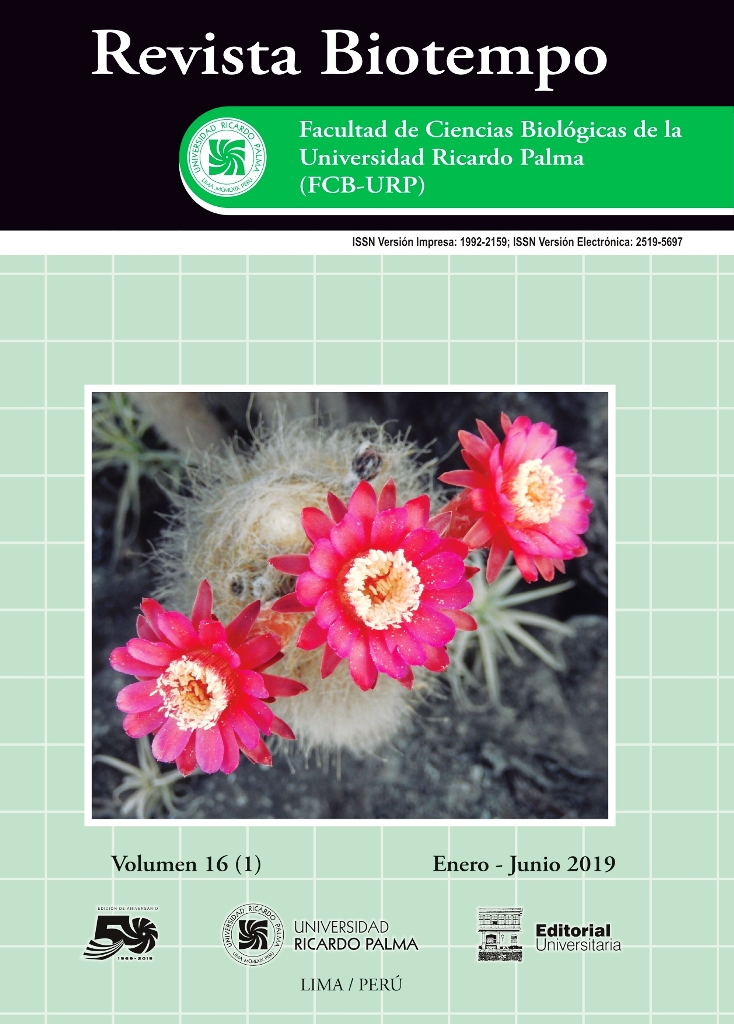ENVENENAMIENTO POR EL MERCURIO INORGÁNICO EN MENORES EN UNA ZONA URBANA DE MINERÍA ILEGAL
DOI:
https://doi.org/10.31381/biotempo.v16i1.2259Abstract
Mercury is a heavy metal with toxic eff ects, especially at the level of the central nervous system. Th e poisoning by this metal can be acute when the damage occurs in a limited time or chronic when the deleterious eff ect is sustained. Inorganic mercury poisoning in minors who were never linked to illegal mining, an activity that takes place where minors reside, was determined. Of 118 children under 18 years, 28.8% (34/118) exceeded the permissible limits (5 μg Hg·g-1) of creatinine. Th e percentage of contaminated minors was high given that they are people who are not linked to mining activity, so they must have been accidentally contaminated by activity generated by someone close to the minors. Th is premise was demonstrated in the case of the minor who was contaminated every time the mercury vapor was emitted by a chimney that was near the window of her room when mercury amalgam was re-founded on the fi rst floor of the minor’s residence. A high percentage of contaminated minors was demonstrated. Minors that are not related to the activity of illegal mining that is a serious threat to public health, especially since this group is highly vulnerable due to the cognitive development that would be aff ected by the inhalation of heavy metals.










